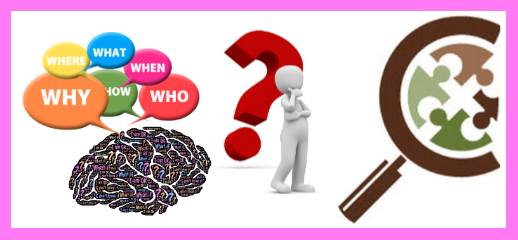

Taxonomy of Personal Engagement:
- Interest – student appears to be attentive, may like the subject
- Engaging – student actively participates in learning tasks
- Committing – students are actively involved/engaged in material, find it hard to move on to other topics
- Internalizing – student “gets it”, sees connections between learning and other experiences
- Interpreting – student wants to talk about implications and opinions related to learning
- Evaluating – student “owns” the knowledge, may ask questions to check their understandings
Using Taxonomy of Personal Engagement to Design Questions:
- Interest – What questions will I ask to attract students’ attention?
- Engaging – What questions will I ask to get students more actively involved in discussion? that signal that I value their ideas?
- Committing – What questions will I ask that will get students to take on responsibility for line(s) of inquiry?
- Internalizing – What questions will I ask that will get students to relate their prior experiences, their feelings and opinions to targeted content material?
- Interpreting – What questions will I ask that will invite them to express their understanding of their own worlds in relationship to the world of the subject matter? What opportunities will students to ask questions about their new understandings?
- Evaluating – What questions will I ask that will let students try our their new thinking in new media?

The taxonomy of personal engagement creates and visualizes a road map for different types of affective responses toward new learnings. The taxonomy of personal engagement can help teachers consider what affective response they would like students to have with material and to design questions to stimulate these responses. Using this taxonomy can help teachers design students that get students more engaged in learning and that stimulate students to ask more questions.

Preparation Steps
- Analyze standards and develop aligned learning targets.
- Decide which levels of personal engagement are desired for each learning target.
- Design questions aligned to learning targets and selected levels of personal engagement.
Early Implementation Steps
- Ask students questions designed for different learning targets and for different levels of personal engagement.
- Observe students’ responses to see if the questions are stimulating the expected levels of engagement. Use observations to fine tune questions strategies.
Advanced Implementation Steps
- Ask students what types of questions stimulate different levels of personal engagement. Ask for characteristics and examples. Use this feedback to design better questions.
- Give students topics and ask them to design questions at various levels of cognitive engagement. Use these questions to facilitate discussions.

- Assessment articles
- Questioning Strategies articles
- Understanding articles
- Scaffolding academic talk
- Classroom conversations

